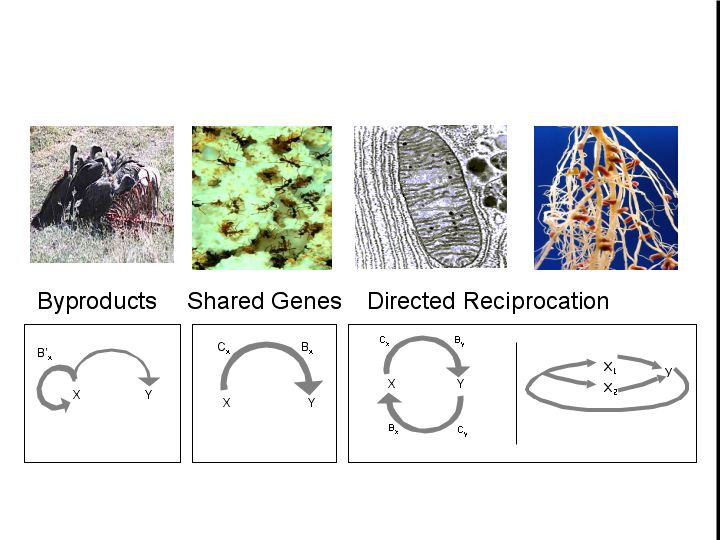
The Evolution of cooperation: a framework
Darwin recognized that natural selection could not favor a trait in one species solely for the benefit of another species. The modern, selfish-gene view of the world suggests that cooperation between individuals, whether of the same species or different species, should be especially vulnerable to the evolution of non-cooperators. Yet, cooperation is prevalent in nature both within and between species. What special circumstances or mechanisms thus favor cooperation?
Currently, evolutionary biology offers a set of disparate explanations, and a general framework for this breadth of models has not emerged. In collaboration with three other biologists at the University of Texas, I have worked to build a conceptual framework for the evolution of cooperation. We offer a tripartite structure that links previously disconnected views of cooperation. We distinguish three general models by which cooperation can evolve and be maintained: (i) directed reciprocation –cooperation with individuals who give in return, (ii) shared genes–cooperation with relatives (e.g., kin selection and green beard), and (iii) byproduct benefits –cooperation as an incidental consequence of selfish action. Each general model is further subdivided. Several renowned examples of cooperation that have lacked explanation until recently: plant-rhizobium symbioses and bacteria-squid light organs fit squarely within this framework. Natural systems of cooperation often involve more than one of our models, and a fruitful direction for future research is to understand how these models interact to maintain cooperation in the long term.
Manuscript:
Sachs, J. L., Mueller, U. G., Wilcox, T. P., Bull, J. J. (2004). The Evolution of Cooperation. (IN PRESS) . The Quarterly Review of Biology PDF
